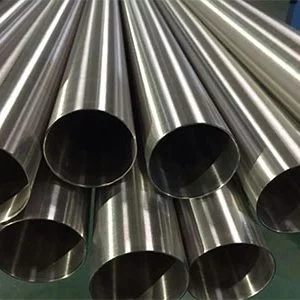Introduction
What is stainless steel? Stainless steel is a versatile and widely used material known for its corrosion resistance, durability, and aesthetic appeal. From kitchen appliances to medical instruments and industrial machinery, stainless steel plays a crucial role in various industries. This comprehensive guide will delve into the properties, types, manufacturing processes, and applications of stainless steel, providing you with everything you need to know about this essential material.
What Is Stainless Steel?

Stainless steel is an alloy composed primarily of iron, with a minimum of 10.5% chromium content by mass. The chromium forms a thin layer of oxide on the steel’s surface, known as the passive layer, which prevents further surface corrosion. This ability to resist corrosion and rusting makes stainless steel unique compared to other steel types.
Composition and Properties
The primary elements in stainless steel include iron, chromium, nickel, molybdenum, and carbon. Each of these elements contributes to the alloy’s overall properties:
- Iron (Fe): The base metal providing the fundamental structure.
- Chromium (Cr): Enhances corrosion resistance and hardness.
- Nickel (Ni): Adds toughness and resistance to impact and thermal expansion.
- Molybdenum (Mo): Increases corrosion resistance, especially against chlorides.
- Carbon (C): Improves hardness and strength.
Key Properties of Stainless Steel
- Corrosion Resistance: The passive layer of chromium oxide prevents rust and corrosion.
- Durability: High tensile strength and resistance to wear and tear.
- Aesthetic Appeal: Smooth, shiny surface that can be polished to a high sheen.
- Hygiene: Non-porous and easy to clean, making it ideal for medical and food applications.
- Heat Resistance: Maintains strength and shape at high temperatures.
Types of Stainless Steel
Stainless steel comes in several types, each with distinct properties tailored to specific applications. The main categories include:
Austenitic Stainless Steel
Austenitic stainless steel is the most common type, known for its excellent corrosion resistance and formability. It contains high levels of chromium and nickel and is non-magnetic.
Common Grades
- 304: The most widely used grade, offering good corrosion resistance and weldability.
- 316: Contains molybdenum for enhanced corrosion resistance, particularly against chlorides.
Ferritic Stainless Steel
Ferritic stainless steel is magnetic and contains chromium but little to no nickel. It offers good corrosion resistance and is commonly used in automotive and industrial applications.
Common Grades
- 430: Widely used for automotive trim and appliances.
- 409: Used in automotive exhaust systems due to its high temperature and corrosion resistance.
Martensitic Stainless Steel
Martensitic stainless steel is known for its high strength and hardness, achieved through heat treatment. It is magnetic and contains higher carbon content.
Common Grades
- 410: Used for cutlery and surgical instruments.
- 420: Known for its excellent hardness and is used in knife blades.
Duplex Stainless Steel
Duplex stainless steel combines the properties of austenitic and ferritic stainless steels, offering high strength and excellent corrosion resistance.
Common Grades
- 2205: A popular grade used in the chemical industry and for marine applications.
Precipitation-Hardening Stainless Steel
Precipitation-hardening stainless steel offers high strength and hardness through heat treatment processes.
Common Grades
- 17-4 PH: Used in aerospace and chemical industries for its high strength and corrosion resistance.
Manufacturing Processes
The production of stainless steel involves several key steps, from raw material extraction to the final product.
Melting and Casting
The process begins with melting raw materials, including iron ore, chromium, nickel, and molybdenum, in an electric arc furnace. The molten metal is then cast into semi-finished shapes such as billets, blooms, or slabs.
Hot Rolling
Hot rolling involves heating the cast metal and passing it through rollers to achieve the desired thickness and shape. This process improves the metal’s strength and ductility.
Annealing
Annealing is a heat treatment process that involves heating the metal to a specific temperature and then cooling it slowly. This process relieves internal stresses and enhances ductility.
Descaling
Descaling removes oxide scales formed during hot rolling and annealing. This is typically done using acid baths or mechanical processes.
Cold Rolling
Cold rolling further reduces the metal’s thickness and improves its surface finish. This process also increases the metal’s strength and hardness.
Finishing
The finishing process includes polishing, grinding, and coating to achieve the desired surface texture and appearance. The final product is then cut and shaped according to specifications.
Applications of Stainless Steel
Stainless steel’s unique properties make it suitable for a wide range of applications across various industries.
Medical and Pharmaceutical
Stainless steel is used extensively in medical and pharmaceutical applications due to its corrosion resistance, hygiene, and non-reactive properties. Common uses include surgical instruments, medical devices, and pharmaceutical processing equipment.
Food and Beverage
In the food and beverage industry, stainless steel is favored for its cleanliness, durability, and resistance to corrosion. It is used in kitchen appliances, food processing equipment, and storage tanks.
Construction and Architecture
Stainless steel is a popular material in construction and architecture for its strength, aesthetic appeal, and resistance to weathering. It is used in building facades, roofing, and structural components.
Automotive
The automotive industry uses stainless steel for exhaust systems, trim, and structural components due to its durability, heat resistance, and corrosion resistance.
Aerospace
In aerospace applications, stainless steel is used for its high strength-to-weight ratio, corrosion resistance, and ability to withstand extreme temperatures. It is found in aircraft frames, engine components, and fasteners.
Industrial
Stainless steel is essential in industrial applications such as chemical processing, oil and gas, and power generation. It is used in equipment like reactors, heat exchangers, and pipelines.
Table: Comparison of Stainless Steel Types and Applications

| Type | Key Properties | Common Grades | Applications |
|---|---|---|---|
| Austenitic | Excellent corrosion resistance, non-magnetic | 304, 316 | Kitchenware, medical devices, piping |
| Ferritic | Magnetic, good corrosion resistance | 430, 409 | Automotive trim, appliances |
| Martensitic | High strength and hardness, magnetic | 410, 420 | Cutlery, surgical instruments |
| Duplex | High strength, excellent corrosion resistance | 2205 | Chemical industry, marine applications |
| Precipitation-Hardening | High strength, corrosion resistance | 17-4 PH | Aerospace, chemical industries |
Conclusion
Stainless steel is an indispensable material in modern industry, valued for its corrosion resistance, durability, and versatility. Understanding the different types of stainless steel, their properties, and their applications can help you make informed decisions when selecting materials for various projects. Whether in construction, automotive, medical, or food industries, stainless steel continues to play a vital role in advancing technology and improving quality of life. By staying informed about this essential material, you can better appreciate its contributions to everyday life and industry.
FAQ
What is stainless steel made of?
Stainless steel is primarily composed of iron, chromium (at least 10.5%), nickel, molybdenum, and carbon. The chromium forms a passive layer of oxide on the surface, which prevents corrosion.
What makes stainless steel different from regular steel?
The key difference between stainless steel and regular steel is the presence of chromium, which provides corrosion resistance. Regular steel lacks this element, making it more prone to rust and corrosion.
How is stainless steel graded?
Stainless steel is graded based on its composition and properties. Common grades include 304, 316, 430, and 410, each offering different levels of corrosion resistance, strength, and suitability for various applications.
Can stainless steel be recycled?
Yes, stainless steel is 100% recyclable. It can be melted down and reused without losing its properties, making it an environmentally friendly material.
What are the main uses of stainless steel?
Stainless steel is used in a wide range of applications, including kitchenware, medical devices, construction materials, automotive components, aerospace parts, and industrial equipment, due to its durability, corrosion resistance, and aesthetic appeal.
Is stainless steel magnetic?
Whether stainless steel is magnetic depends on its type. Ferritic and martensitic stainless steels are magnetic, while austenitic stainless steels are generally non-magnetic.
How should stainless steel be maintained?
Stainless steel requires regular cleaning to maintain its appearance and prevent corrosion. Use mild detergents and avoid abrasive cleaners. Regularly inspect and clean surfaces to remove any contaminants.
Can stainless steel rust?
While stainless steel is highly resistant to rust, it is not completely immune. In harsh environments or when exposed to certain chemicals, stainless steel can develop surface rust. Proper maintenance and selection of the right grade can minimize this risk.
What are the advantages of using stainless steel in construction?
Stainless steel offers several advantages in construction, including its strength, durability, aesthetic appeal, and resistance to corrosion and weathering. It is also low maintenance and has a long lifespan.
How is stainless steel used in the food industry?
In the food industry, stainless steel is used for its hygiene, non-reactivity, and ease of cleaning. It is found in kitchen appliances, food processing equipment, storage tanks, and utensils, ensuring food safety and quality.
